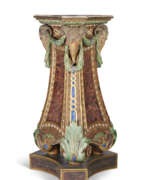Aestheticism
.jpg)
Aestheticism
Aestheticism, also known as the aesthetic movement, a late 19th-century European arts movement, is famed for its principle that art exists for its beauty alone and need not serve any political, didactic, or other purposes. This movement began as a reaction to the utilitarian social philosophies and the perceived ugliness of the industrial age. Its philosophical foundations were laid in the 18th century by Immanuel Kant, who emphasized the autonomy of aesthetic standards separate from morality, utility, or pleasure.
In Britain, Aestheticism was represented by figures like Oscar Wilde, Algernon Charles Swinburne, James McNeill Whistler, and Dante Gabriel Rossetti. These artists and writers were often satirized for their style, as seen in Gilbert and Sullivan's comic opera "Patience" and other works. Notable examples of Aesthetic art include Rossetti’s “Lady Lilith” and Whistler's "Harmony in Blue and Gold: The Peacock Room". These works showcase the movement's focus on beauty and sensual qualities over practical, moral, or narrative considerations.
The movement also had a significant impact on decorative arts, with designers like Christopher Dresser and William Morris leading the way. They sought to bring beauty and good practical design into every aspect of life, contributing to a revolution in building and interior decoration. This idea also influenced social theory and political thinking.
Aestheticism peaked public interest in artists' houses and extravagant lifestyles, leading to the 'Palaces of Art' created by artists like Rossetti, Burne-Jones, Morris, and Leighton. The idea of 'The House Beautiful' became a popular concept, revolutionizing domestic interior decoration and leading to widespread recognition of the need for beauty in everyday life.
Aestheticism, in its celebration of beauty for beauty's sake, marked a crucial moment in the history of art, influencing not only the visual arts but also literature and interior design. For collectors and experts in art and antiques, understanding Aestheticism provides insights into a unique period of artistic exploration and expression.
For those interested in learning more about Aestheticism and keeping up with related sales and auction events, signing up for updates can provide valuable information and opportunities.
| Country: | Europe, France, Germany, Italy, Russia, United Kingdom |
|---|---|
| Start of the period: | 1870 |
| End of the period: | 1920 |







